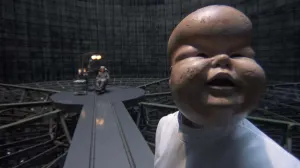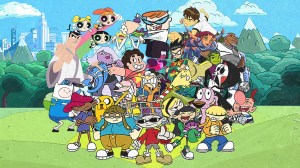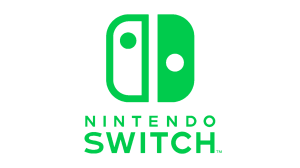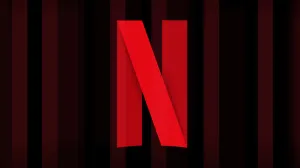
This is a big week for fans of the Injustice comics adaptations. In addition to receiving the newest installment of Injustice 2 #30, featuring some epic Red Lantern Hal Jordan action, they will also see the first part of the new crossover Injustice Vs. Masters of the Universe. While that may sound like an odd mashup, it’s from the same creative team who have nailed two series featuring Batman and the Teenage Mutant Ninja Turtles, so fans of either property will likely be hooked from the first issue. This big crossover, combined with more than 100 issues of Injustice and Injustice 2 highlights just how large the alternate universe take on DC Comics characters has grown. What began as a digital-only spinoff from a video game has become a significant property in its own right.
Videos by ComicBook.com
That has happened before with plenty of other alternate takes on these classic characters. DC Comics still can’t leave behind the likes of Kingdom Come or Dark Knight Returns for more than a few years without some new miniseries or in-continuity reference. The best new takes tend to live on in the stories of other creators and fresh stories. Except Injustice was not what many would consider a “best new take” at its outset. The video game and first few issues of the series were distressing for fans of the characters involved to say the very least, and, in the eyes of many, it was simply a bad idea. So how did Injustice last this long? And, more importantly, how did it evolve into being a genuinely great comics series?

Starting Behind the 8-Ball
The original Injustice: Gods Among Us video game featured an Earth on which superheroes were engaged in constant battle, all possessed some metahuman qualities, and wore (often ridiculous) suits of armor. It was a fighting game featuring popular intellectual property in search of a story. The premise behind all of these superheroes fighting was developed to be an alternate Earth on which Superman had become a despot following the murder of his family and destruction of Metropolis by the Joker. In the wake of such a catastrophic event, he broke his rule against killing, which also led him to break his rule against becoming a violent, authoritarian dictator overseeing all life on Earth. It was a slippery slope, apparently.
This story was a perfectly serviceable excuse to have Superman and Batman punch one another very, very hard on gaming systems. It was less palatable as an actual narrative. Beyond the aggressively grimdark posturing of that story, it also ignored many essential elements of the characters and genre involved. In the wake of excessively violent and cynical DC Comics like Identity Crisis and Justice League: Cry For Justice, this plot felt like the terrible cherry on a very bad sundae. The expectations for the comics adaptation could not have been set lower.

Pulling Out of the Dive
The very first Injustice series was designed as a digital-first series with weekly publication schedule. It would be helmed by writer Tom Taylor and a long roster of artists, including Jheremy Raapack, Bruno Redondo, and Tom Derenick. The first several issue quickly moved through the events that drove Superman to madness in order to focus on the years between this inciting incident and the battles featured in the Injustice: Gods Among Us video game. These issues are every bit as brutal as what was described in the game, but it’s apparent Taylor and his collaborators are moving through the material as efficiently as possible. The death of Lois Lane, Metropolis, and The Joker are anything but drawn out. The Injustice series focuses much more on how this radically different version of Superman and his evolving regime impact other superheroes (and villains) who are much closer in presentation to their iconic identities.
Superman is utilized by Taylor as a source of conflict and means for constructing an alternate Earth where superheroes can no longer attempt simply to maintain the status quo. It quickly evolves into a battle against fascism, which consumes some beloved figures while transforming others into a resistance force. That arrangement also creates a number of strange bedfellows, with Harley Quinn quickly evolving into a heroic figure and close friend to several heroes. It was a high contrast arrangement that was meant to tease out character-defining moments in circumstances that would have been impossible within the current publishing design of the New 52 at the time. The original series progressed over five different volumes, each of them detailing a new year between the start of the story and events of the video game. Writer Brian Buccellato took over midway through the third year, but throughout it all comics readers and critics continue to praise the surprising and moving moments of the series as it evolved beyond its source material.

Creating Something Special
Over the course of that first year, Taylor and his collaborators grew their project beyond the tone and style of video game which it was based upon. Much like the great superhero Elseworlds stories of DC Comics with similarly grim scenarios, it managed to move past a critical juncture point in the past in order to focus on what made specific characters heroic in a new context. One of the most impressive elements is how its sprawling nature managed to encompass so much DC Comics lore. The entire spectrum of Lanterns, not just the Green ones, have been presented in some fashion. B-list superheroes like Booster Gold and Blue Beetle have received their own moving storylines. There have been digressions into odd parts of the DC canon with an extensive storyline focused entirely on the many magic users of the universe. Injustice and, now, Injustice 2 have outgrown their origin to become a great story about superheroes in a world that is radically different from our own.
There’s a lesson in the history of these Injustice comics that is especially applicable to both their genre and medium. As superhero comics continue to use the same characters and never provide truly final endings, there’s as much possibility in bad ideas as great ones. Just because a concept didn’t land the first time, there’s no reason that a new creator can’t take that idea and find a new spin to push beyond the past and tell a thrilling new story. Looking back it seems nothing short of miraculous that Taylor and later collaborators accomplished as much as they did within this series, which just goes to show much they could do when let loose elsewhere in the weird world of superheroes.








